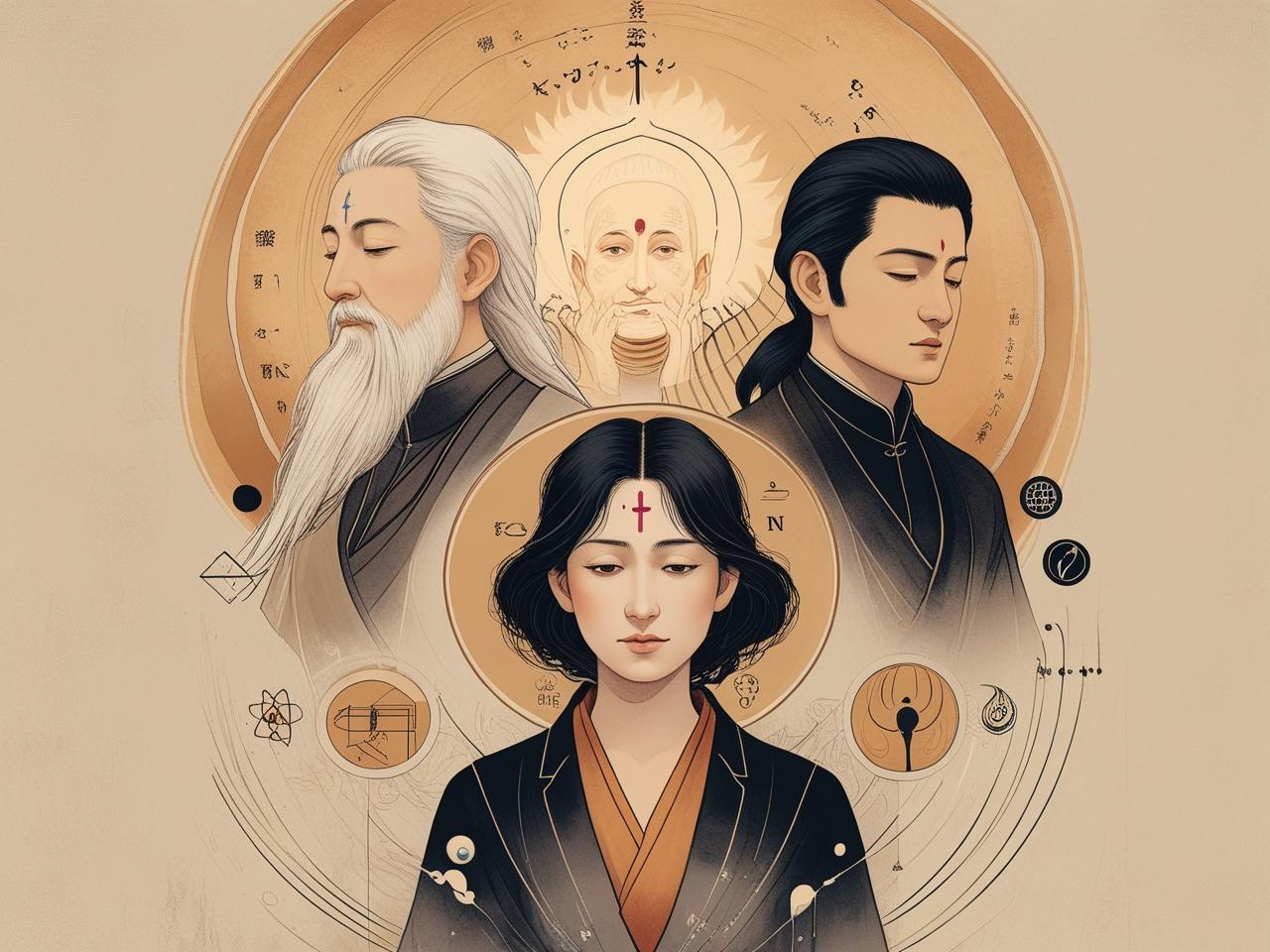In every discussion about belief systems, we often hear two extremes: āstik (the theist) and nāstik (the atheist). One believes in God, the divine, or a higher power; the other rejects it. But is life really so black and white? What if there’s a third path one that doesn’t blindly follow religion or outright deny it, but seeks a deeper truth through logic, introspection, and experience?
From my perspective, human beings are not just of two types. There exists a third category rare, but real. These are not believers in the traditional sense, nor deniers in the scientific sense. They are seekers spiritual explorers who walk the path of personal discovery. Let’s call them the “Tattva-Jigyāsu” a Sanskrit-inspired term meaning “truth-seekers” or “essence-inquirers.”
Who Are the Tattva-Jigyāsu?
These are the individuals who neither blindly follow rituals nor casually reject them. They ask questions like:
- “Who am I?”
- “Where did I come from?”
- “Is there something beyond this physical reality?”
- “What does it mean to be conscious, to exist?”
- “Is God a person, a force, or something within us?”
They don’t find satisfaction in ready-made answers. For them, religion is not about rituals but about realization. God is not necessarily a bearded man in the sky, but something more profound perhaps consciousness itself, or the interconnectedness of life, or the stillness within.
Not āstik, Not nāstik: Just Human
Let’s take a step back. Traditional labels serve a purpose:
- The āstik sees divine order, purpose, and design. They have faith, devotion, and often follow a scripture or a guru.
- The nāstik trusts logic, evidence, and rejects what can’t be proven.
Both extremes can offer wisdom, but both can also trap the mind either in blind faith or rigid skepticism.
Now enter the Tattva-Jigyāsu. This person might meditate like a Buddhist, question like a scientist, appreciate nature like a poet, and feel the universe like a mystic. They might visit temples, but not out of fear or social pressure only if they feel a connection. They might read the Gita, the Quran, the Bible, or the Tao Te Ching not to convert, but to understand.
This person might say, “I don’t know if God exists the way people say, but I know there’s something deeper in life worth exploring.”
Famous Tattva-Jigyāsu Through History
Think about some of the greatest spiritual teachers not all of them fit cleanly into the āstik or nāstik box:
- Gautama Buddha: He didn’t talk about God much. Instead, he spoke of suffering, awareness, and inner peace. He emphasized direct experience over belief.
- Kabir: He mocked religious dogma both Hindu and Muslim and focused on the soul’s union with the divine essence.
- Socrates: A philosopher who questioned everything even the gods of his time. His search for truth was deeply spiritual, though not religious.
- Jiddu Krishnamurti: He rejected organized religion and urged people to understand the mind and consciousness themselves.
- Rumi: A Sufi mystic whose poetry describes God as love, not law.
None of them claimed to have all the answers. But they pointed inward to the heart, the mind, and the soul as the true places of discovery.
Why This Third Path Matters Today
In today’s world, religion is often misused for politics, division, or blind tradition. On the other hand, pure rationalism sometimes fails to touch the human soul. People crave meaning not just data. We need a middle path more than ever.
The Tattva-Jigyāsu reminds us that it’s okay to question and still be spiritual. You can meditate and still be logical. You can reject superstition without rejecting wonder. This path encourages:
- Critical thinking without cynicism
- Spiritual openness without blind following
- Compassion and mindfulness without dogma
Signs You Might Be a Tattva-Jigyāsu
- You feel deeply connected to nature, music, silence, or the stars.
- You question religious customs, but you’re still drawn to something sacred.
- You read from many traditions, but you follow your own truth.
- You meditate, reflect, journal, or explore consciousness in some way.
- You’re okay with not having all the answers.
- You believe the divine might not be “out there” but “in here.”
If that sounds like you, you’re not lost you’re walking the third path.
Can Science and Spirituality Coexist?
Absolutely. Great minds like Albert Einstein, Carl Jung, and even Nikola Tesla spoke of a mysterious order or intelligence in the universe. They didn’t claim to “believe” blindly, but they saw how deep the mystery of existence really is.
Being a Tattva-Jigyāsu means using both the microscope and the mirror examining the outside world and the inner world equally.
What to Call This Path?
There may not be a widely used modern term yet, but we can draw from ancient languages. In Sanskrit:
- Tattva = essence, truth, fundamental reality
- Jigyāsu = one who is curious or seeking knowledge
So we propose: Tattva-Jigyāsu “the seeker of truth.”
It could also be described as:
- Spiritual rationalist
- Consciousness explorer
- Inner scientist
- Mystical skeptic
But whatever the name, the essence is this: to seek truth beyond belief and denial, to explore both logic and intuition, to live in deep awareness.
Final Thoughts: You Are the Path
At the end of the day, whether God exists in the sky or not, one thing is true you exist. You can feel, think, question, love, and evolve. The entire universe is reflected within your consciousness. And that, perhaps, is the greatest mystery of all.
Being a Tattva-Jigyāsu is not about rejecting others’ beliefs. It’s about walking your own path, asking deeper questions, and being open to experiences that transform you.
You don’t have to be āstik or nāstik.
You can just be aware. Just be seeking. Just be you.
If you liked this blog, share it with fellow seekers. Let’s grow a community that respects all paths but follows truth above all.

